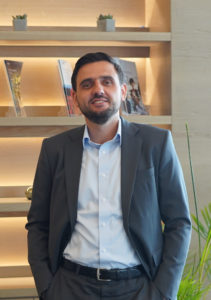Company official points out that deployment of AI and IoT are leading to higher returns on investment

Dorival Bordignon
DUBAI, UAE, 14 June 2020: The impact on the bottom line is always a consideration for investments, said Dorival Bordignon Junior, Principal, Kearney. He added that sustainability targets, set by internal organisations and GCC region governments, are slowly being taken into greater account. “Investments in energy efficiency used to face an important limitation in the GCC [region] – the low electricity price,” he said. “In comparison to European countries and the US, where electricity prices are up to 2.6 times higher than GCC [region] countries, energy efficiency projects could often be an expensive short-term option. With energy price reforms taking place across the GCC, and the emergence of improved energy-efficient technologies, the financial viability of energy-efficiency projects continues to improve.”
Bordignon pointed out that there are examples of retrofits projects for commercial facilities that have achieved 20-50% ROI and at a payback period of less than one year. “Such returns are possible by deploying at scale of new technologies, such as IoT and AI,” he said. “The improvement in the economics of the sector is also noticed by facility owners as well as by financial investors.” Bordignon added that sectors where energy is a significant component of the total cost of ownership are more interested in energy efficiency, as the impact on the bottom line can be evident in the early years of equipment and design installation. “Most commercial buildings, such as malls, hotels, hospitals and airports, are great candidates due to very high energy consumption needed to operate long hours to maintain cooling demand,” he said. “For instance, Dubai Airport is pursuing a multi-year retrofit project, targeting 23% annual energy savings.”
When it comes to new facilities, Bordignon said the conundrum between facility developer, owner and operator needs to be addressed to ensure innovative building design, technologies, materials and systems are deployed, even if it represents incremental development costs. “In the short term, more detailed regulations and frameworks that take into consideration the total asset lifecycle cost can dictate energy efficiency in buildings, particularly during the construction phase,” he said. “New data centres, where energy cost represent up to 10% of operating costs, can easily overcome such conflicts and incorporate green designs since inception to lower energy consumption by leveraging new technologies, such as big data and machine learning, and physical layouts, such as closed cold corridors.” Bordignon pointed out that a quick and easy process to determine appropriate energy-efficiency solutions, reduced transaction costs as well as access to competitive capital and investment risk management are key factors considered to ensure a financial case can be made.
On whether the same financial case can be utilised to make a case for indoor air quality, Bordignon said there are challenges. “While the benefits of improving indoor air quality were established several years ago, the potential health and productivity benefits have not yet been integrated in the conventional economic calculations related to building design and operation,” he said. “Such integration could provide economic arguments for applying measures to reduce internal air pollution.”
Copyright © 2006-2025 - CPI Industry. All rights reserved.